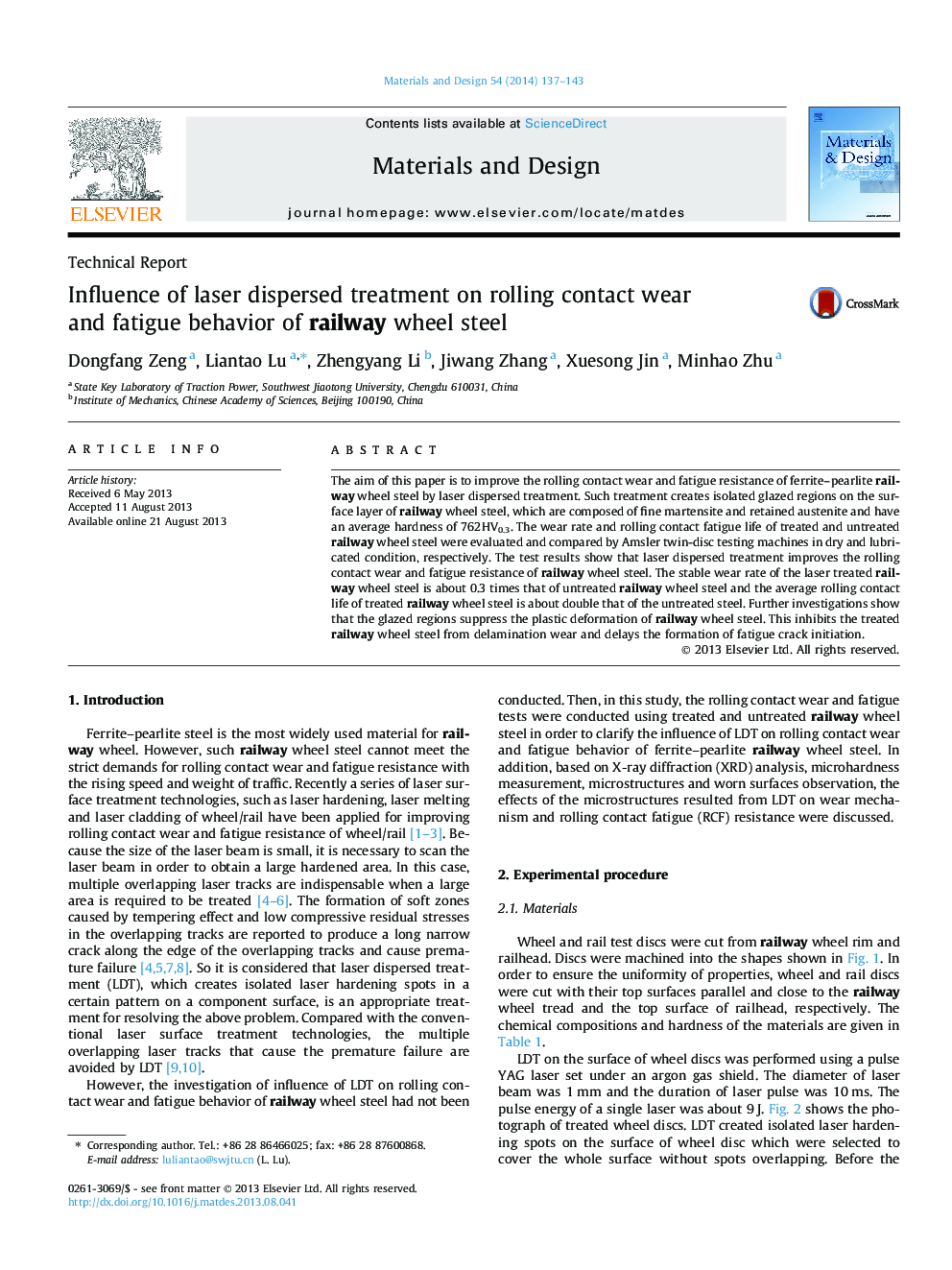| Article ID | Journal | Published Year | Pages | File Type |
|---|---|---|---|---|
| 829621 | Materials & Design (1980-2015) | 2014 | 7 Pages |
•Laser dispersed treatment creates glazed regions on the surface of wheel steel.•The glazed regions are composed of fine martensite and retained austenite.•The glazed regions suppress the plastic deformation of wheel steel.•The delamination wear and fatigue crack initiation is delayed by the treatment.
The aim of this paper is to improve the rolling contact wear and fatigue resistance of ferrite–pearlite railway wheel steel by laser dispersed treatment. Such treatment creates isolated glazed regions on the surface layer of railway wheel steel, which are composed of fine martensite and retained austenite and have an average hardness of 762HV0.3. The wear rate and rolling contact fatigue life of treated and untreated railway wheel steel were evaluated and compared by Amsler twin-disc testing machines in dry and lubricated condition, respectively. The test results show that laser dispersed treatment improves the rolling contact wear and fatigue resistance of railway wheel steel. The stable wear rate of the laser treated railway wheel steel is about 0.3 times that of untreated railway wheel steel and the average rolling contact life of treated railway wheel steel is about double that of the untreated steel. Further investigations show that the glazed regions suppress the plastic deformation of railway wheel steel. This inhibits the treated railway wheel steel from delamination wear and delays the formation of fatigue crack initiation.
